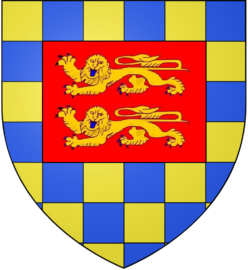The commune of Bellencombre is situated in the Varenne valley a short distance from Saint-Saëns, in the Seine-Maritime in Normandy, mid way between Rouen and Dieppe. The commune contains the remains of a long abandoned motte and bailey castle, dating from the XI-XIIIth C. In 2017 an Association (A.S.C.B. = Association de Sauvegarde du Château de Bellencombre) was created in order to preserve the what remains of the castle and to retore and promote its significant history. To this end, a convention was signed between the association and the Commune who are the owners of most of the site.
A l’occasion des JOURNEES EUROPEENNES DU PATRIMOINE, une visite commentée aura lieu tous les ans l’après-midi (voir rubrique Activités de l’A.S.C.B.). En dehors de cette opération, contacter le président de l’association Lionel Gaudefroy (voir rubrique Contactez-nous !)
Like many of the castles in the area (Arques-la-Bataille, Hautot-sur-Mer, Longueville-sur-Scie, Torcy-le-Grand, Saint-Saëns, La Grande Heuze/Bellencombre, Mortemer…) dating from the medieval period, they are the ruins left to us today (see the heating The Fortified castles of Talou). The Bellencombre castle suffered several sieges during conflicts between the kings of France and kings of England during the period of Normandy’s independence (from France) 911-1204, but also during the hundred years War. It was above all, England’s inability to sufficiently garrison the less important castles that left them tacitly defenceless and vulnerable to destruction, notably by the Burgundians under Charles le Téméraire. The evolution of artillery from bombards to canons rendered such castles physically unsuitable for « modern warfare » and became convenient centres for brigands and finally as quarries for their stonework.
.


In Bellencombre there remain the bases of two round towers forming the entrance to the upper bailey, around which small sections of flint walling have survived. Around the lower bailey however, an impressive amount of the curtain wall remains, standing in places six metres high and containing three loop holes, one of which is intact. At the level of the bailey, we see the remains of a tower and even possible, a second tower entirely invaded by vegetation. The impressive moat of the castle is ten metres deep in places. In the lower part of the lower bailey, the walls have totally disappeared. There remains very little of the wall which once would have enclosed the entire commune.
Below the entrance to the upper bailey by the two towers destroyed from 1833, access was originally by a draw bridge.





